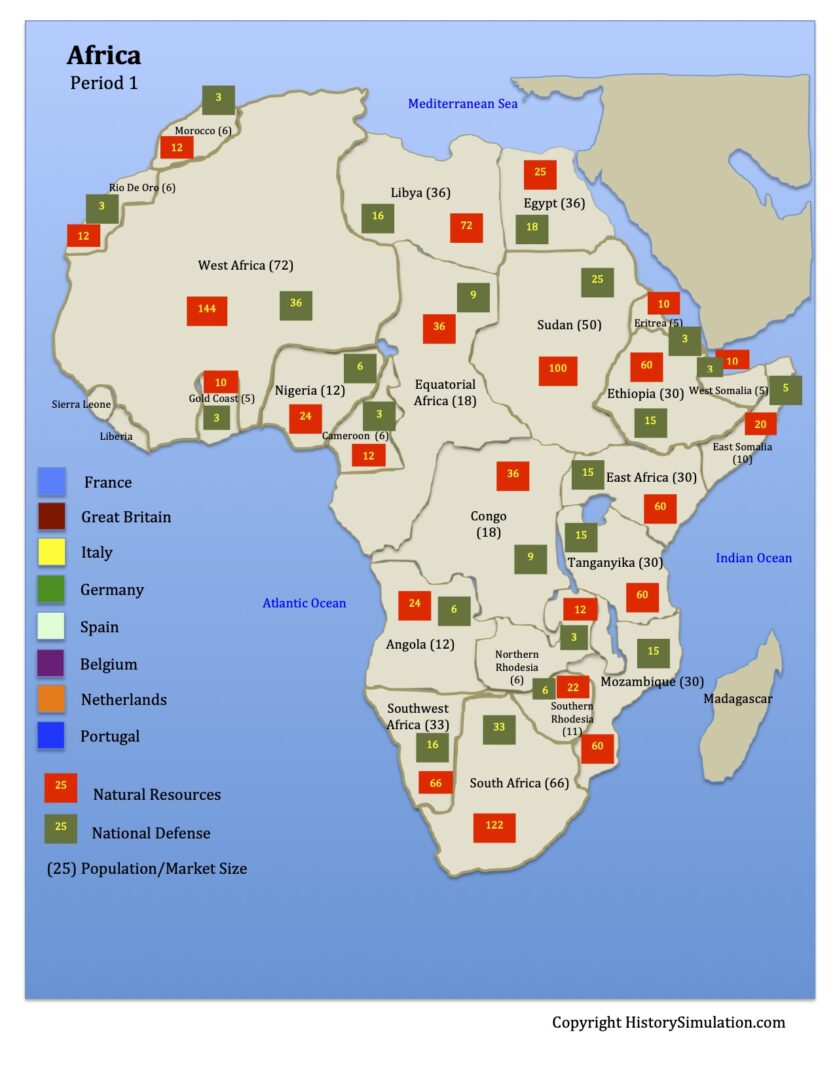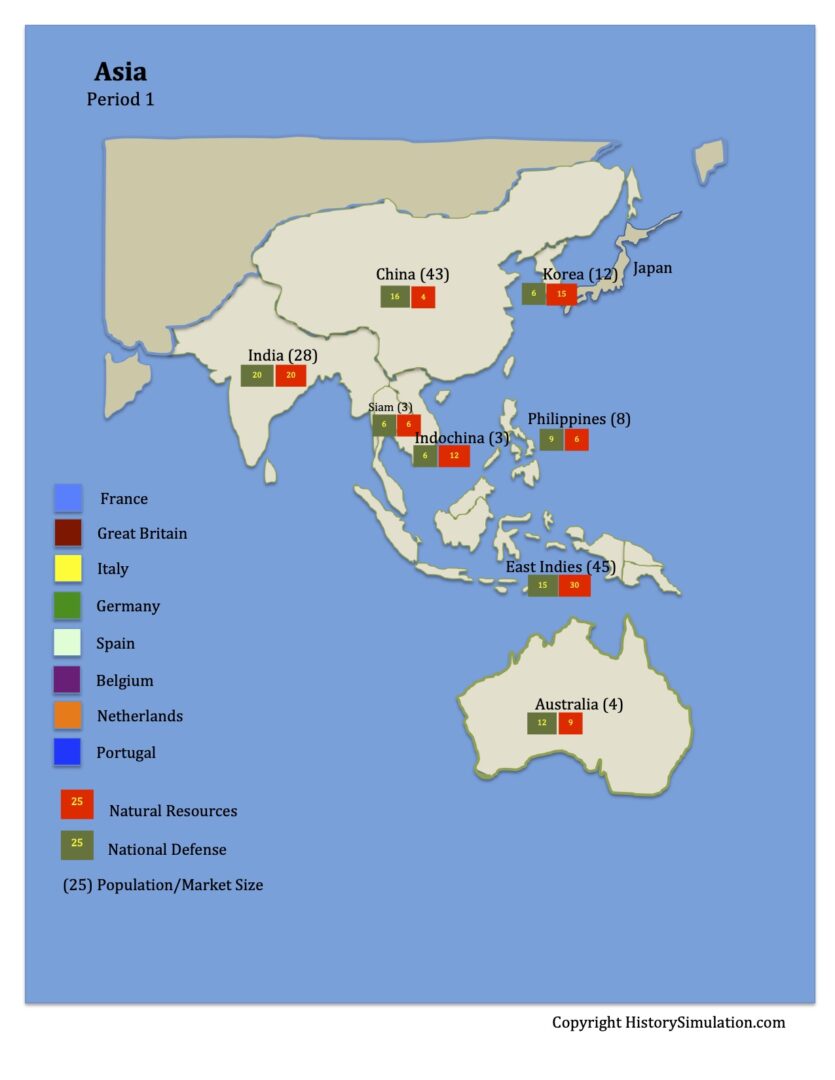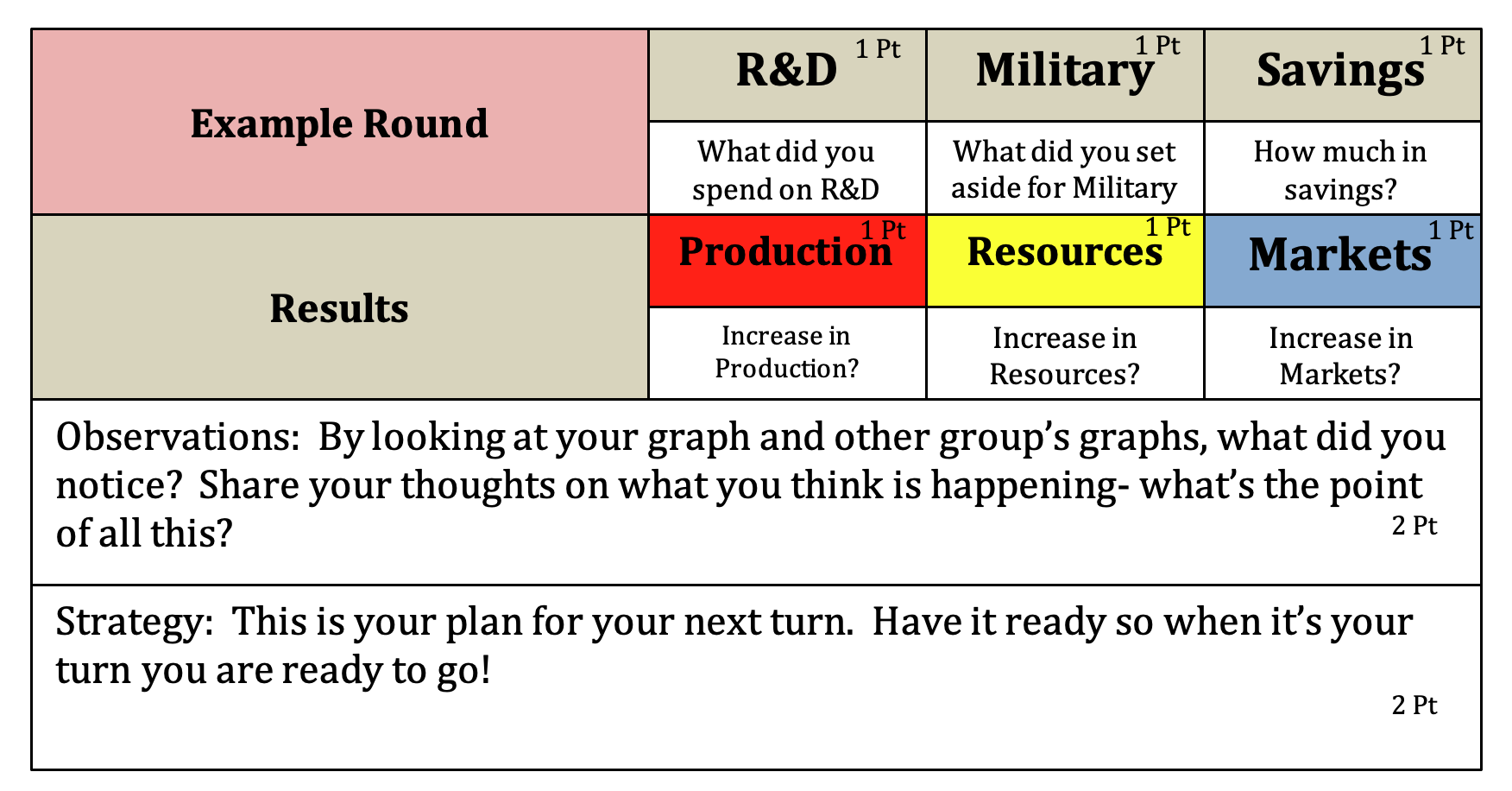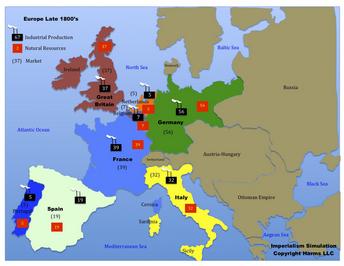Imperialism Game
CREATE AN ENGAGING CLASSROOM WITH OUR INTERACTIVE, HANDS-ON IMPERIALISM MAP ACTIVITY
Are you looking for dynamic and engaging Imperialism Map Activity for the classroom? Instead of lecturing to students about European Imperialism in Africa and Asia, engage students with this interactive activity.
Using gamification to teach Imperialism creates a competitive environment and students don't even realize how much they are learning as they are immersed in critical thinking and problem solving in the classroom.
KEY OBJECTIVES
Understand the interdependence of: Industrial Production, Natural Resources and Markets. This is one of the main reasons Imperialism happened. Understand the general geography of Africa and Asia.
These Imperialism Lesson Plans are designed for High School, Middle School and Upper Elementary.
Online Learning Ready! We have created new systems, that will allow the teacher and students to be at their homes and conduct the simulation efficiently. Access to these tools are included. With ever changing conditions for our schools, having an online option gives the teacher and students great flexibility!
The Sequence of the Game
The activity begins with 8 groups representing European countries. At the start, each country has natural resources and industrial production that are equal in size. Groups have the option of spending their national income on:
- Research and Development to increase their industrial production.
- Military: for military conquest in Africa and Asia.
- Saving income for a later turn.
As students make their decisions, they are watching and learning from each other. When students invest in technology, their industrial production increases. Income will only grow if countries have markets to sell to and natural resources to supply industrial production.
Research & Development Rolling Dice to Increase Technology
In the first round, students spend all their income on Research and Development. This simulates the Industrial Revolution and the enormous increase in production through efficiency. Students then have to use strategic thinking to choose the best odds that would produce the most technology-which will increase production.
When production increases, countries need more natural resources to supply their factories and bigger markets to sell the increased amount of products that are now being produced. This is the driving need that pushed countries to look to the under-developed regions of Africa and Asia for both natural resources and markets.
Conquering Countries
In round 2, students start by rolling for technology again. Next, students will choose a country in Asia or Africa to conquer and spend part of their income on military credits totaling whatever the national defense number is of that country (Green Box).
The teacher will then click on that country and select the European country that conquered it which will add the natural resources and market numbers to their country's stockpiles.


National Defense (28)
Natural Resources (28)
Market Size (28)
The Competition
The competition is between the countries to increase their income per capita. That means that the smaller countries can have a big advantage. The Online Simulator ranks the countries after every turn so students can see what place they are in.
The competition increases student interest and engagement as they compete with other students in the classroom. At the end of 5 rounds, the country with the largest per capita income is the winner!
Tutorials
Example Turn
Student Orientation
Imperialism Report Template

Analyzing Results
After each round, students record and analyze their choices and the effect that their decisions had on the economic factors of Industrial Production, Natural Resources and Markets.
By the end of the simulation students understand how and why Imperialism happened as well as how Industrial Production, Natural Resources and Markets are interdependent.
All these tasks are automated except the dice rolling which is a favorite of the students. Teachers enjoy the easy to use online Imperialism Simulator.


